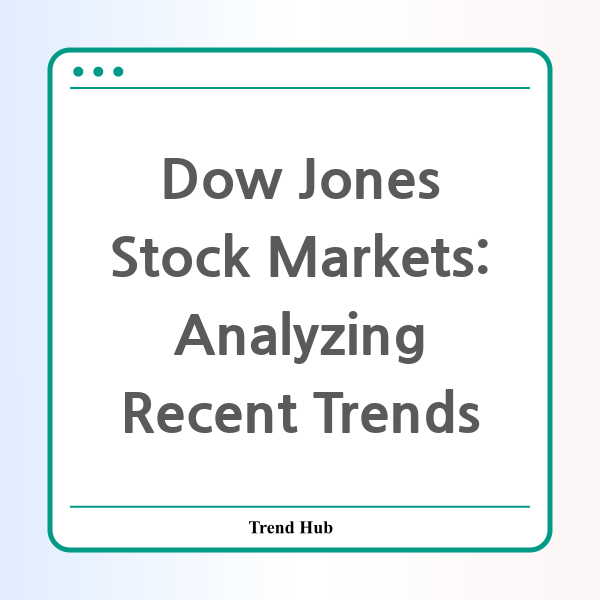* This website participates in the Amazon Affiliate Program and earns from qualifying purchases.

Are you keeping a close eye on the Dow Jones stock markets? If you are, you're not alone. The stock market landscape is ever-changing, and recent developments have many investors feeling optimistic. Today, we will dive deep into the current state of the Dow Jones Industrial Average and the greater stock market, particularly in light of recent news that focuses on significant rallies and market shifts.
In the latest trading sessions, we saw a remarkable turn of events, especially in the technology sector. As reported, the S&P 500 managed to wipe out its 2025 losses, propelled by a tech rally led by Nvidia. Stepping into the spotlight, Nvidia’s stock surged nearly 6%, fortifying its status as a powerful player in the semiconductor and AI chip market. This upsurge is accentuated by the optimism surrounding the US-China trade relationship, which seems to be stabilizing, at least for now.
The S&P 500 rose 0.7% recently, marking a pivotal moment where it turned positive for the year after languishing at 2025 lows just a month prior. This turnaround isn't merely a fluke but a signal of resilience in the market. Meanwhile, the Nasdaq Composite experienced a significant boost, climbing approximately 1.8%, buoyed by several tech giants, including Tesla and Meta, which saw respective gains of 5% and 3%.
However, not all segments of the market have escaped unscathed. The Dow Jones Industrial Average fell by 0.6%, largely due to the drop in shares of UnitedHealth, which plummeted more than 12%. The healthcare provider has faced challenges with rising costs, prompting it to suspend its 2025 forecasts. Such downturns highlight the importance of sector-specific factors that can heavily influence individual stock performance.
Moving forward, stock futures have recently remained flat, as traders cautiously anticipate further movements in the market. The overall sentiment on Wall Street has turned optimistic, with many analysts noting a ‘risk-on’ environment where investors are willing to embrace potential volatility for higher returns. This sentiment is underscored by the recent announcement of a truce in the ongoing tariff battle between the US and China, which has alleviated some of the fears that had plagued the markets for months.
Tech stocks, in particular, are at the forefront of this market rebound. Several tech firms have not only met but exceeded expectations, leading to increased trading volumes. For instance, Robinhood recently reported a rise in customer activity and trading volumes in April, acknowledging the uptick in retail investor enthusiasm as they look to capitalize on market fluctuations.
With Chime, a fintech player, filing for an IPO on the Nasdaq, it is clear that the tech market remains vibrant and full of opportunities for growth, setting the stage for further developments. Transferable skills and insights from these modern platforms can lead to innovative approaches in personal finance and investment strategies.
This blog post serves as a reminder to investors and market enthusiasts to stay informed and attuned to market fluctuations and sector-specific dynamics. The Dow Jones stock markets are not merely a reflection of economic health but are highly responsive to changes in trade policies, corporate earnings, and technological advancements. As we move deeper into 2025, keeping a pulse on these trends will be essential for making informed investment decisions.
In conclusion, while growth appears promising for many sectors, particularly technology, it's crucial not to overlook the challenges that persist. With the market so finely balanced, a keen understanding of both macroeconomic and microeconomic factors can position investors favorably, riding the waves of market shifts as they occur.
* This website participates in the Amazon Affiliate Program and earns from qualifying purchases.